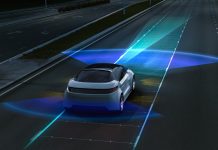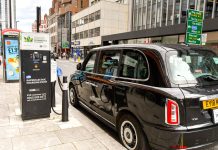Vicky Sins, Decarbonisation and Energy Transformation Lead at the World Benchmarking Alliance, discusses the role of electric vehicles in achieving sustainable road transport in Europe
In an interview with Open Access Government, Vicky Sins, the Decarbonisation and Energy Transformation Lead at the World Benchmarking Alliance, discusses the importance of electric vehicles (EVs) in achieving sustainable road transport in Europe.
Building on her team’s expertise and findings, she addresses whether EVs alone can meet the growing transport demand or if they should be integrated into a broader mobility system that includes alternative transport modes.
Additionally, the interview explores the potential for reducing the life-cycle emissions of typical EVs by at least 73% by 2050, provided that production efficiency and cleaner electricity generation improve. Discover more insights in this engaging interview.
To what extent do electric cars, vans, trucks, and buses play a crucial role in reducing the negative impacts of road transport on human health, the environment, and climate?
In 2022, transportation was the highest emitting sector in Europe, and road transport accounted for 73% of these emissions. The health costs attributable to road transport air pollution in the EU are estimated between €67 billion and €80 billion annually, with over threequarters linked to diesel cars.
EVs have zero tailpipe emissions, so their adoption is essential. EVs eliminate tailpipe emissions of harmful pollutants like particulate matter (PM)2.5 and nitrogen dioxide (NO2
), which are prevalent in combustion engine vehicles and significantly impact human health.
Moreover, battery technology for EVs is scalable, with projected cost reductions of 50% by 2030 compared to 2020. However, the full benefits of electrification can only be realised with widespread adoption, necessitating strong policy support and corporate commitments to phase out internal combustion engine (ICE) vehicles, particularly in markets beyond Europe.
With this in mind, it’s unmotivating to see that from the WBA’s latest Automotive and Transportation Manufacturers Benchmark that no automotive manufacturer is committed to fully phasing out fossil fuel vehicles by 2035, highlighting the gap between EV adoption needs and current industry commitments.
As transport demand grows, will electric vehicles alone be sufficient to achieve sustainable road transport in Europe?
As transport demand grows, EVs alone will not suffice to achieve sustainable road transport. Complementary policies are essential to manage and reduce demand through promoting public transportation, active mobility, and shared mobility models. For example, Germany’s universally accessible public transport ticket during the COVID-19 pandemic resulted in a reduction of 6.7 million tonnes of CO2 emissions, equivalent to 4.7% of the country’s total transport emissions.
Policy measures such as ICE bans and stringent emission standards are important, but they must be part of a broader strategy that includes urban planning, mobility-as-a-service (MaaS), and demand management to enhance sustainability. Despite this, our latest report highlights that we’re seeing insufficient low-carbon investments, with only seven companies from our report committed to increasing these by 2025, underscoring the need for broader systemic changes.
Must electric vehicles be considered within the broader mobility system, which focuses on mobility needs and alternative modes of transport?
EVs should be considered within the broader mobility ecosystem, focusing on holistic mobility needs and alternative transport modes. However, again, our research points out that most manufacturers lack strategies for integrating EVs into a broader sustainable mobility ecosystem, such as Vehicle-as-a-Service (VaaS) models.
Shifting from car ownership to usage-based subscription models, such as Vehicle-as-a-Service (VaaS), is one example of how we can reduce the environmental footprint while maintaining mobility flexibility. VaaS is not intended to promote car-sharing. Instead, this system allows individuals to access a private vehicle without owning it, as the subscription model covers maintenance, battery charging, and other operational costs for the fleet. This differs from traditional car-sharing schemes, where multiple users share the same vehicle on a short-term basis.
Throughout their life cycle, do European electric cars produce fewer greenhouse gases (GHGs), air pollutants, and noise than their petrol or diesel counterparts?
Life Cycle Assessment (LCA) studies confirm that European EVs produce significantly fewer greenhouse gases (GHGs), air pollutants, and noise than petrol or diesel vehicles. Battery Electric Vehicles (BEVs) have 63% to 69% lower life-cycle GHG emissions than gasoline cars. While the production phase, particularly battery manufacturing, entails higher emissions, these are offset during the use phase due to the absence of tailpipe emissions and the increasing share of renewable energy in electricity generation. The decarbonisation of the energy sector further reduces BEV emissions annually.
While emissions during the production phase are generally higher, do these increase during the use phase over time?
Unlike ICE vehicles, BEV emissions during the use phase are expected to decline over time as electricity generation becomes cleaner. The rapid expansion of renewable energy in Europe, aligned with the 1.5°C climate target, ensures that the carbon intensity of EV charging will decrease, enhancing the environmental benefits of BEVs with each passing year.
If the production of electric vehicles becomes more efficient and electricity generation becomes cleaner, could the life-cycle emissions of a typical electric vehicle be reduced by at least 73% by 2050?
If EV production processes become more efficient and electricity generation continues to decarbonise, the life-cycle emissions of a typical EV could be reduced by at least 73% by 2050. This reduction is contingent on advancements in battery manufacturing, material efficiency, and supply chain decarbonisation.
Currently, around 45% of EV manufacturing emissions stem from upstream activities (Scope 3), emphasising the need for manufacturers to collaborate closely with suppliers to reduce material-related emissions. Under an ambitious EV adoption scenario, material production emissions could constitute 35% of total emissions by 2030 and 60% by 2040, highlighting the critical role of supply chain transparency and efficiency improvements.











